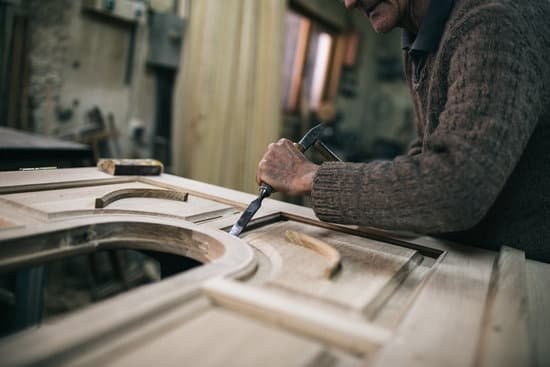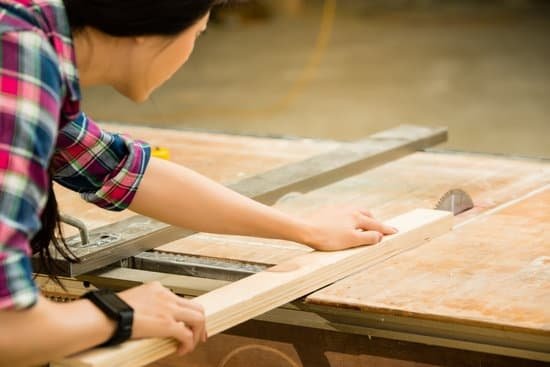What is the best spray paint system for woodworkers? When it comes to woodworking, the finishing touches can make all the difference. That’s where spray paint systems come in, offering woodworkers a convenient and efficient way to add color and protection to their projects. In this article, we will explore the various types of spray paint systems available, discuss the key features to look for, and weigh the pros and cons of using such systems for woodworking projects.
Woodworkers have long understood the value of a quality finish on their creations. Whether it’s adding a pop of color to a piece of furniture or sealing and protecting outdoor woodwork, spray paint systems offer a versatile solution. By understanding the importance of these systems, woodworkers can make informed decisions when it comes to choosing the right one for their needs.
In this comprehensive guide, we will delve into the different types of spray paint systems available to woodworkers. From airless paint sprayers to HVLP (high-volume low-pressure) systems, there are various options to consider.
We will also highlight the key features that woodworkers should look for when selecting a spray paint system, as well as provide tips for maintaining and caring for these essential tools. Whether you’re new to woodworking or an experienced craftsman looking to upgrade your finishing techniques, this article has got you covered.
Types of Spray Paint Systems for Woodworkers
When it comes to choosing the best spray paint system for woodworking projects, woodworkers have several options to consider. Each type of spray paint system has its own set of benefits and drawbacks, so it’s important to understand the differences before making a decision. Below are the main types of spray paint systems that woodworkers can choose from:
- Airless Paint Sprayers: These sprayers use high pressure to atomize the paint, resulting in a smooth and even finish. They are ideal for large woodworking projects and can handle thick coatings with ease.
- HVLP (High Volume Low Pressure) Sprayers: HVLP sprayers are known for their efficiency and minimal overspray. They are great for smaller woodworking projects and provide more control over the application process.
- Compressed Air Sprayers: This type of sprayer uses compressed air to atomize the paint. While they can provide a fine finish, they tend to produce more overspray compared to HVLP sprayers.
Before deciding on a specific type of spray paint system, woodworkers should carefully consider their project needs, budget, and level of experience with spray painting.
It’s essential for woodworkers to look for key features when choosing a spray paint system that best suits their needs. Features such as adjustable pressure settings, ease of cleanup, and interchangeable nozzles for different applications can make a significant difference in the performance and usability of the system.
Woodworkers should also consider factors such as portability, maintenance requirements, and available accessories when evaluating different spray paint systems. By carefully assessing these features, woodworkers can make an informed decision on what is the best spray paint system for their woodworking projects.
Key Features to Look for in a Spray Paint System for Woodworkers
When looking for the best spray paint system for woodworking projects, there are several key features that woodworkers should consider to ensure they are getting the most suitable tool for their needs.
Adjustable Pressure and Flow Control
One of the most important features to look for in a spray paint system for woodworkers is the ability to adjust the pressure and flow control. Different woodworking projects may require different levels of pressure and flow, so having this adjustable feature allows for greater precision and control over the application of paint.
Durable Construction
Since woodworking can be a demanding practice, it’s essential to choose a spray paint system that is durable and built to withstand regular use. Look for systems made from high-quality materials that can handle the wear and tear of frequent painting sessions.
Versatility
A good spray paint system for woodworkers should be versatile enough to handle various types of paints, finishes, and coatings. Whether you’re working on furniture, cabinets, or other wooden surfaces, having a system that can accommodate different materials will make your work more efficient and effective.
By considering these key features when shopping for a spray paint system, woodworkers can ensure they are investing in a tool that meets their specific needs and requirements. Ultimately, choosing the right spray paint system will contribute to achieving professional-quality results in woodworking projects.
Pros and Cons of Using Spray Paint Systems for Woodworking Projects
Advantages of Using Spray Paint Systems
Using a spray paint system for woodworking projects offers several advantages. One of the main benefits is the smooth and even finish that can be achieved with a spray gun. This results in a professional-looking end product with no visible brush strokes or roller marks. Additionally, spray paint systems allow for quick and efficient application, saving time and effort compared to traditional painting methods.
Another advantage is the ability to reach difficult or intricate areas, such as corners and crevices, with ease. This makes it particularly useful for detailed woodworking projects. Spraying also allows for better coverage and penetration into the wood surface, ensuring a more durable and long-lasting finish.
Disadvantages of Using Spray Paint Systems
Despite their many benefits, spray paint systems also come with some drawbacks. One of the main disadvantages is the potential overspray, which can create a messy work environment if not controlled properly. This can result in wasted paint and extra clean-up time. Additionally, using a spray gun requires some level of skill and technique to achieve an even coat without drips or runs.
Another drawback is the initial investment required for purchasing a quality spray paint system, including the equipment and maintenance materials. This cost may be prohibitive for hobbyist woodworkers or those on a tight budget. Finally, spraying paints also creates airborne particles that may require proper ventilation and safety measures to protect against inhalation.
Considering the Pros and Cons
When deciding whether to use a spray paint system for woodworking projects, it’s important to weigh the pros and cons against your specific needs and capabilities. For professionals or those looking to achieve high-quality finishes efficiently, a spray gun may be the best option despite its drawbacks. Hobbyists or beginners may want to consider starting with traditional painting methods before investing in a spray paint system.
Ultimately, understanding the advantages and limitations of using a spray paint system will help woodworkers make informed decisions about their finishing techniques. It’s essential to consider factors such as project size, complexity, budget, and skill level when evaluating whether a spray gun is the right choice for woodworking endeavors.
Best Practices for Using Spray Paint Systems With Wood
Woodworking projects often require a well-executed finish, and spray paint systems can be an excellent tool for achieving professional results. When using a spray paint system with wood, there are some best practices that woodworkers should keep in mind to ensure the best outcome for their projects.
First and foremost, it is crucial to prepare the wood surface properly before using a spray paint system. This includes sanding the wood to create a smooth and even surface, as well as applying a primer if necessary. Proper preparation of the wood will result in better adhesion of the paint and a more polished final look.
Additionally, when using a spray paint system with wood, it is important to apply thin and even coats of paint. Building up the paint in layers will result in a more professional finish and minimize the risk of drips or runs in the final product. It is also essential to maintain the correct distance between the spray nozzle and the wood surface to ensure even coverage.
Finally, after applying the paint with a spray paint system, allowing ample drying time between coats is crucial. Rushing through this process can lead to uneven drying and potentially ruin all your hard work.
| Best Practices | Using Spray Paint Systems With Wood |
|---|---|
| Properly Prepare Surface | Sand and prime wood for optimal adhesion |
| Apply Thin Coats | Avoid drips or runs by layering on the paint evenly |
| Allow Drying Time | Ensure each coat has enough time to dry before adding more layers |
Top Recommended Spray Paint Systems for Woodworkers
When it comes to choosing the best spray paint system for woodworking, there are several options available in the market. It’s important to consider the specific needs of your woodworking projects and the features that each system offers. Here is a detailed review of some of the top recommended spray paint systems for woodworkers:
1. HVLP (High Volume Low Pressure) Spray Gun: HVLP spray guns are popular among woodworkers for their high transfer efficiency and low overspray. This type of system delivers a high volume of air at low pressure, resulting in less waste and a smoother finish. HVLP spray guns are great for fine finishes on woodworking projects and are known for their versatility.
2. Airless Paint Sprayer: Airless paint sprayers are another option for woodworkers, especially for larger projects. These systems use a piston to pump the paint at high pressure, creating a fan-like pattern that delivers an even coat of paint. While they may not provide as fine of a finish as HVLP spray guns, airless paint sprayers are efficient and suitable for painting larger woodworking pieces.
3. Compressed Air Spray Gun: Compressed air spray guns are a more traditional option for woodworkers and can be used with a wide range of paints and finishes. These systems use compressed air to atomize the paint, resulting in a smooth application. While they may require more maintenance compared to HVLP or airless paint sprayers, compressed air spray guns are versatile and can handle various types of coatings.
When choosing the best spray paint system for woodworking, it’s essential to consider factors such as the size of your projects, the type of finish you desire, and ease of maintenance. Ultimately, the best system will depend on your specific needs as a woodworker and the type of projects you typically work on.
Tips for Maintaining and Caring for Your Spray Paint System
Woodworkers who use spray paint systems understand the importance of maintaining and caring for their equipment to ensure optimal performance and longevity. Proper maintenance not only extends the life of the spray paint system but also ensures a high-quality finish on woodworking projects. Here are some tips for woodworkers to effectively maintain and care for their spray paint systems:
- Regular cleaning: It is crucial to clean the spray gun, nozzles, and hoses regularly to prevent buildup of paint residue that can clog the system. Using appropriate cleaning solutions and tools will help ensure that the system functions smoothly.
- Check for wear and tear: Inspect all components of the spray paint system, including seals, gaskets, and filters, for any signs of wear and tear. Replace any damaged parts promptly to avoid compromising the quality of the finish.
- Proper storage: When not in use, it is important to store the spray paint system in a clean, dry area away from extreme temperatures. This helps prevent damage to sensitive parts and prolongs the life of the equipment.
In addition to these maintenance tips, woodworkers should also follow best practices for using their spray paint systems with wood. This includes properly preparing the surface, using suitable paints and finishes, and applying even coats for a professional result.
By incorporating these maintenance tips into their regular woodworking routine, woodworkers can ensure that their spray paint systems remain in top condition and continue to deliver exceptional results on their projects.
Conclusion
In conclusion, finding the best spray paint system for woodworking can greatly enhance the quality and efficiency of your projects. With the various options available in the market, it is important for woodworkers to carefully consider their specific needs and preferences when choosing a spray paint system. Whether it’s a handheld airless sprayer, HVLP system, or an air compressor-powered spray gun, each type has its own advantages and disadvantages.
When looking for the best spray paint system for woodworking, it is crucial to consider key features such as adjustable pressure control, ease of cleaning, variable spray patterns, and compatibility with different types of finishes. These features can greatly impact the performance and versatility of the spray paint system, allowing woodworkers to achieve the desired results with precision and efficiency.
Ultimately, understanding the pros and cons of using spray paint systems for woodworking projects is essential in making an informed decision. By following best practices for using spray paint systems with wood and properly maintaining and caring for your equipment, woodworkers can ensure long-lasting performance and exceptional results. In considering all these factors, woodworkers can confidently choose the best spray paint system that meets their unique woodworking needs.
Frequently Asked Questions
What Is the Best Sprayer for Wood Finishing?
The best sprayer for wood finishing is typically considered to be an HVLP (high volume, low pressure) sprayer. HVLP sprayers are known for their ability to provide a fine, even finish on wood surfaces, making them popular among woodworkers and DIY enthusiasts alike.
What Sprayers Do Professional Painters Use?
Professional painters often use airless paint sprayers for their projects. These sprayers are known for their high-pressure output, which allows for quick and efficient application of paint on large surfaces. Many professional painters also appreciate the ability of airless sprayers to handle thicker paints with ease.
Which Is Better HVLP or Airless?
When it comes to deciding between HVLP and airless sprayers, the choice ultimately depends on the specific project at hand. HVLP sprayers are great for precision and detail work, making them a good option for wood finishing.
On the other hand, airless sprayers excel at covering large areas quickly and are better suited for exterior painting or larger indoor projects. Both types of sprayers have their own strengths and limitations, so it’s important to consider the specific needs of the project before making a decision.

Hi everyone! I’m a woodworker and blogger, and this is my woodworking blog. In my blog, I share tips and tricks for woodworkers of all skill levels, as well as project ideas that you can try yourself.





